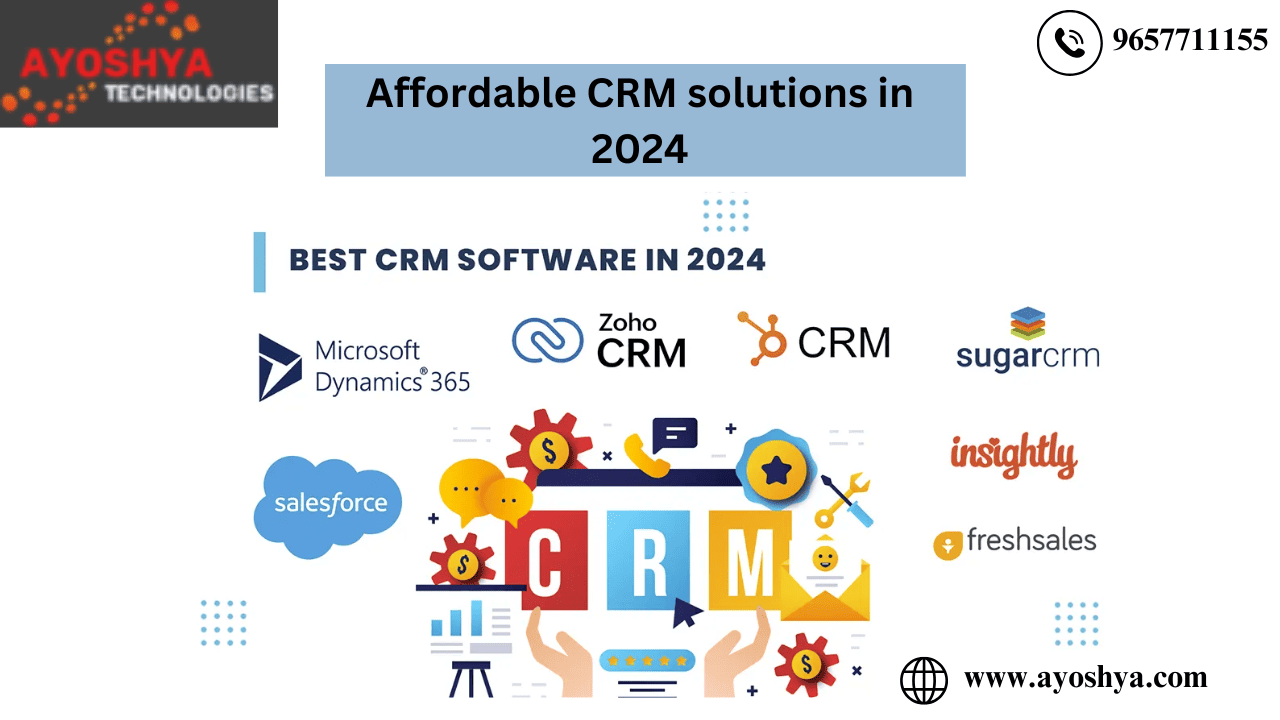The History of Robo-Advisors and Automated Investing
History of Robo-Advisors
- Originated in the late 2000s post-financial crisis.
- The first generation launched to offer low-cost, transparent investment options.
- Utilized advancements in AI and machine learning to enhance services.
- Gained popularity for democratizing financial advice, especially among millennials.
- Evolved to offer comprehensive financial planning.
- Industry acceptance grew, integrating into traditional financial institutions.
- Continues to expand with technology, shaping future investment strategies.
The Genesis of Robo-Advisors

The inception of robo-advisors marks a pivotal moment in the history of financial services. Technology integration is transforming the landscape of investment management.
This evolution traces back to the late 2000s, marked by significant financial turmoil and a growing disillusionment with traditional investment avenues.
Timeline: The Emergence of Robo-Advisors
- Late 2000s: The conceptual foundation for robo-advisors was laid to leverage technology to democratize access to investment advice.
- 2008 Financial Crisis: The catalyst for significant change, this period underscored the limitations and opacity of traditional financial institutions, creating a ripe environment for innovation.
- 2010 and Beyond: The first robo-advisory platforms, such as Betterment and Wealthfront, launched, offering automated, algorithm-driven investment services to the public.
Inspiration: Seeking Alternatives in the Wake of Crisis
The 2007-2008 financial crisis served as a wake-up call for many, exposing the complexities and risks inherent in the traditional financial system.
The aftermath was characterized by:
- A Demand for Transparency: Investors sought clarity and simplicity in investment management, avoiding the often opaque practices of traditional financial institutions.
- The Quest for Affordability: The economic downturn left many seeking more cost-effective ways to manage their investments, with traditional advisor fees prohibitively expensive for the average investor.
- A Call for Accessibility: There was a growing recognition that sound investment advice and management should not be exclusive to the wealthy but available to anyone with savings to invest.
The Solution: Robo-Advisors Enter the Scene
Robo-advisors emerged as a technological antidote to the challenges the traditional financial advisory model poses. They were built on the premise of offering:
- Automated Investment Management: By using algorithms to create and manage diversified portfolios, robo-advisors offer a hands-off approach to investing, appealing to those intimidated by the complexity and time demands of traditional investing.
- Lower Costs: By automating many processes that human advisors handled manually, robo-advisors could drastically reduce fees, making investment advice more affordable.
- Greater Accessibility: By offering online platforms that simplify account setup and management, robo-advisors have allowed a broader population to access investment services.
- Transparency and Control: Offering clear fee structures and the ability to monitor investments in real-time, robo-advisors provided a level of control and transparency that resonated with investors disillusioned by the traditional financial system.
Early Innovators and the First Generation of Robo Advisors

Profiles of pioneering companies that launched the first robo-advisor platforms.
- Betterment and Wealthfront were the first platforms to hit the market, launching in 2008 and 2011. These companies became synonymous with the robo-advising movement, attracting significant investment and user growth.
- Schwab Intelligent Portfolios: Introduced by Charles Schwab, a well-established financial services firm, in 2015, marking a pivotal moment where traditional financial institutions began to embrace the technology.
Overview of initial services offered and how the market received these.
- Services: Early robo-advisors offered automated portfolio management based on algorithms that allocated investments across diversified asset classes. They focused on key selling points such as low fees, low account minimums, and tax-loss harvesting.
- Market Reception: The initial reception was mixed, with skepticism from traditional investors but significant interest from millennials and tech-savvy individuals looking for an alternative to traditional investment advice. This demographic was attracted to the user-friendly interfaces, lower costs, and the promise of transparency.
The genesis of robo-advisors marked a significant shift in the investment landscape, propelled by technological advancement and a pressing need for change in the aftermath of the financial crisis.
Early innovators paved the way for the widespread adoption and evolution of robo-advising services, fundamentally changing how people approach investing.
Evolution of Technology and Expansion of Services
The journey of robo-advisors from their inception to the present day is a story of remarkable technological evolution and service diversification.
Initially focused on basic portfolio management, these digital advisors have leveraged advancements in artificial intelligence (AI) and machine learning to transform the landscape of financial advice.
Advancements in AI and Machine Learning That Enhanced the Capabilities of Robo Advisors
- Smart Algorithms: Integrating sophisticated AI algorithms has significantly elevated the predictive capabilities of robo-advisors. These algorithms analyze vast amounts of market data in real-time, enabling the prediction of market trends with higher accuracy. This precision allows for tailoring portfolio management strategies to align closely with individual investment goals and risk tolerance.
- Enhanced User Experience: Machine learning plays a pivotal role in refining the user interface of robo-advisors. By analyzing user interactions, these platforms continually evolve to become more intuitive and user-friendly. The result is a seamless experience that simplifies the investment process, making it more accessible to individuals regardless of financial literacy.
Expansion from Basic Portfolio Management to Comprehensive Financial Planning Tools
- Beyond Stocks and Bonds: The investment universe of robo-advisors has expanded significantly. Modern platforms offer diverse investment options, from traditional stocks and bonds to alternative assets like real estate, commodities, and even cryptocurrencies. This diversification allows investors to construct portfolios that are better aligned with their specific financial goals and risk appetite.
- Holistic Financial Planning: Today’s robo-advisors have grown to become all-encompassing financial planning tools. Beyond mere investment advice, they now offer services such as retirement planning, where algorithms estimate future financial needs and craft savings strategies accordingly. Educational savings plans are another addition, helping parents to invest wisely for their children’s future. Moreover, automated budgeting tools integrated into robo-advisory platforms enable users to manage their finances more effectively, providing a comprehensive financial health overview.
Adaptive Portfolios and Personalization
- The leap forward in AI technology has also enabled robo-advisors to offer adaptive portfolios that adjust automatically to changing market conditions and personal life events. This dynamic adjustment ensures that investment strategies align with the user’s financial goals.
Enhanced Security Measures
- With advancements in encryption and cybersecurity, modern robo-advisors ensure their users’ highest data protection and privacy levels, addressing one of the critical concerns in the digital financial advisory space.
Integration with Ecosystems
- Robo-advisors are increasingly becoming part of larger financial ecosystems, offering integrations of banking, insurance, and tax preparation services. This holistic approach ensures that all aspects of a user’s financial life are interconnected, providing a seamless and efficient management experience.
In conclusion, the evolution of robo-advisors is a testament to the rapid advancements in AI and machine learning, which have significantly enhanced the capabilities of these platforms.
The Growing Popularity Among Investors

Demographic Shifts: How Robo Advisors Appealed to Millennials and Digital Natives
- Tech-Savvy Solutions: Millennials and digital natives, comfortable with technology, gravitated towards the convenience and simplicity of managing investments through an app or website.
- Cost-Effective Investing: Robo advisors’ low fee structure is particularly attractive to younger investors, who may start with smaller investment amounts.
The Role of Robo Advisors in Democratizing Financial Advice and Investment Management
- Accessible to All: By lowering the barrier to entry, robo advisors have made financial advice and investment management services available to a broader audience.
- Empowerment Through Education: Many platforms offer educational resources, empowering users to make informed decisions about their financial futures.
The evolution of robo-advisors showcases a significant leap in technology application within the financial sector, leading to an expanded suite of services that cater to a more diverse range of financial needs.
Coupled with their growing popularity, especially among younger investors, robo-advisors have played a pivotal role in making financial advice and investment management more accessible and adaptable to the changing landscape of investor demographics and preferences.
Regulatory Challenges and Industry Acceptance

Examination of Regulatory Responses to the Rise of Automated Investment Services
- Adapting Regulations: Financial authorities have been updating regulations to ensure consumer protection without stifling innovation, leading to a safer environment for automated investment.
- Ensuring Compliance: Robo advisors have had to evolve quickly to meet these regulatory standards, integrating sophisticated compliance algorithms into their operations.
How Traditional Financial Institutions Began Integrating Robo Advisory Services
- Collaboration and Development: Recognizing the efficiency and appeal of robo-advisors, many traditional banks and financial services firms have started offering their automated advisory services or partnering with existing robo-advisory platforms.
- Enhanced Offerings: This integration has allowed traditional institutions to broaden their service offerings, combining the personalized touch of human advisors with the efficiency of automation.
The rise of robo-advisors has significantly impacted how people manage their finances, appealing to a demographic that values efficiency, transparency, and accessibility.
Meanwhile, the financial industry’s landscape is evolving, with regulatory bodies adapting to the new technology and traditional financial institutions embracing automated services to meet modern investor demands.
Robo-Advisors in 2010 vs. 2024: Evolution and Transformation

The landscape of robo-advisors has significantly transformed from its early days in 2010 to the sophisticated platforms we see in 2024.
This journey reflects technological advancement and a shift in investor expectations, regulatory landscapes, and the financial industry’s approach to digital innovation.
Robo-Advisors in 2010: The Pioneering Phase
- Basic Portfolio Management: Initially, robo-advisors offered straightforward portfolio management based on standard algorithms that allocated investments across a mix of stocks and bonds, depending on the user’s risk tolerance.
- Limited Personalization: While they offered personalized portfolio recommendations, these were largely based on basic questionnaires covering risk appetite and investment goals.
- Focus on Low Costs: Early robo-advisors attracted users primarily through their low-cost structures, offering a more affordable alternative to traditional financial advisors.
- Emerging Regulatory Frameworks: As a new entity, robo-advisors navigated a regulatory environment that was still evolving to accommodate digital financial services.
Robo-Advisors in 2024: A New Era of Financial Technology
- Advanced AI and Machine Learning: Modern robo-advisors leverage sophisticated AI algorithms and machine learning to offer dynamic portfolio management, adjusting to real-time market changes and personal life events.
- Holistic Financial Planning: Beyond simple portfolio management, today’s platforms incorporate a wide range of financial planning services, including retirement planning, tax optimization, and even estate planning, offering a comprehensive financial advisory experience.
- Increased Personalization: Utilizing big data analytics, robo-advisors now provide hyper-personalized investment strategies that consider the user’s full financial picture, including savings, debts, and spending habits.
- Integration with Broader Financial Ecosystems: Robo-advisors are no longer standalone platforms but are often integrated with banking, insurance, and other financial services, providing a seamless financial management experience.
- Enhanced User Interfaces: With advancements in technology, robo-advisors offer more intuitive and engaging user interfaces, including mobile apps, voice-activated commands, and virtual financial assistants.
- Regulatory Clarity and Consumer Trust: The regulatory framework around digital financial advice has matured, offering clearer guidelines and protections for consumers, which has helped build trust in robo-advisory services.
- Sustainability and ESG Investing: Reflecting growing investor concern about global issues, many robo-advisors now offer portfolios focused on sustainability and ESG (Environmental, Social, and Governance) criteria.
The Impact of Robo Advisors on Traditional Financial Advising
Comparison Between Traditional and Robo Advising in Terms of Costs, Accessibility, and Client Experience
- Cost Efficiency: Robo advisors typically offer lower fees than traditional advisors due to automated processes and lower operational costs.
- Wider Accessibility: With lower minimum investment requirements, robo advisors make investment management services accessible to a broader audience, including younger investors and those with limited capital.
- Enhanced Client Experience: The use of technology in robo-advising allows for a more personalized and accessible client experience through platforms that are available 24/7 and can be tailored to individual financial goals.
Current Landscape and Major Players
The domain of robo-advisors has flourished, becoming a cornerstone in modern investment management.
This growth spurt is attributed to investors gravitating towards solutions that promise both ease of access and efficiency and affordability.
Today, the robo-advisory landscape is a vibrant mix featuring specialized robo-advisory firms and traditional financial giants that have ventured into automated investing.
Overview of the Current Market Landscape for Robo Advisors
Its diversity and rapid evolution characterize the current market for robo-advisors. Investors, ranging from novices to seasoned market players.,
They increasingly rely on these digital advisors for a substantial portion of their investment management needs. This shift is propelled by the allure of lower fees, algorithmic precision, and the convenience of managing investments online.
Integrating AI and machine learning has led to more personalized and adaptive investment strategies, making robo-advisors attractive to a broader audience.
Moreover, the inclusion of services beyond simple portfolio management, such as retirement planning and tax optimization, has significantly expanded their appeal.
Profiles of Leading Robo Advisors Today and Their Unique Value Propositions
- Betterment: A trailblazer in the robo-advisory sphere, Betterment stands out for its commitment to making investing approachable for beginners. With its no minimum deposit requirement and user-centric platform, it has democratized access to personalized investment management.
- Wealthfront: Catering to both the investment newbie and the savvy investor, Wealthfront distinguishes itself with a rich suite of features, including direct indexing and advanced tax-loss harvesting. Its broad array of account types ensures that almost every investor finds a fitting home for their funds.
- Vanguard Personal Advisor Services: Vanguard merges the efficiency of robo-advisory with the nuanced understanding of human advisors. This hybrid approach has resonated with investors who seek a balanced mix of automated investment management and personalized advice, especially for complex financial situations.
- Schwab Intelligent Portfolios: Schwab’s offering stands out in the crowded robo-advisory space by eliminating advisory fees and directly addressing investors’ cost concerns. Its robust platform provides many investment options, including ETFs covering numerous asset classes.
- Ellevest: Focused on the financial empowerment of women, Ellevest addresses the unique challenges and goals women face in the investment world. Its platform offers tailored investment strategies considering pay gaps, career breaks, and longer lifespans.
- Acorns: Known for its micro-investing approach, Acorns simplifies investing by rounding up purchases and investing in the change. It’s particularly popular among younger investors looking to make investing a habitual part of their financial lifestyle.
- Personal Capital: Bridging the gap between digital convenience and comprehensive wealth management, Personal Capital appeals to higher net-worth individuals with its blend of advanced technology and dedicated financial advisors.
- SigFig: Positioned as a robo-advisor for the masses, SigFig partners with traditional banks to offer its technology-driven advisory services. It’s known for its low-cost managed portfolios and free portfolio tracking tools.
- M1 Finance: M1 Finance combines the flexibility of individual stock investing with the ease of robo-advisory. Investors can create custom “pies” of stocks and ETFs and utilize automated investment management features.
- SoFi Automated Investing: Part of a broader suite of financial services, SoFi’s robo-advisor emphasizes automatic rebalancing and goal setting without management fees, making it an attractive option for fee-averse investors.
As we look towards the future, the landscape of robo-advisors is set to evolve further, driven by technological innovations and changing investor needs.
These leading platforms, each with its unique value proposition, showcase the dynamic nature of this sector and highlight the personalized, accessible, and cost-effective investment solutions available to today’s investors.
The Future of Robo Advisors
Predictions for the Next Phase of Robo Advisors, Including Potential Technological Advancements
- Greater Integration with Everyday Financial Services: Expect to see robo advisors becoming a central part of wider financial ecosystems, offering seamless connections with banking, insurance, and other financial services.
- Advanced Personalization Through AI: As AI technologies evolve, robo advisors will offer even more personalized advice, potentially predicting life events and automatically adjusting investment strategies accordingly.
The Role of Big Data, AI, and Personalization in Shaping Future Investment Strategies
- Big Data: Expansive data sets will allow robo advisors to make informed investment decisions, understand real-time market trends, and tailor strategies to individual investor profiles.
- AI and Machine Learning: These technologies will drive the ability of robo advisors to adapt strategies based on learning from market movements, investor behavior, and economic indicators.
- Personalization: Future robo advisors will likely offer a level of personalization previously only available from human advisors, using technology to tailor investment strategies to each investor’s unique goals and situations.
The landscape of robo-advisors is continuously evolving, driven by technological advancements and changing investor needs.
As we look to the future, integrating AI, big data, and personalization will play a crucial role in shaping investment management services, making them more adaptive, insightful, and aligned with individual financial goals.
Top 10 Most Famous Robo-Advisors of All Time

- Betterment
- Famous For: Being one of the first and largest robo-advisors, offering goal-based investing strategies with no account minimum for starting.
- What Happened: Continues to grow, expanding its services with options like socially responsible investing portfolios and financial planning packages.
- Wealthfront
- Famous For: Pioneering features such as direct indexing (Stock-level Tax-Loss Harvesting) and offering various account types.
- What Happened: It maintained its position as a leading robo-advisor by continuously enhancing its financial planning tools and investment options.
- Schwab Intelligent Portfolios
- Famous For: Launched by Charles Schwab, one of the biggest names in investment management, it offered automated investing with no advisory fees.
- What Happened: It remains popular among investors who prefer a robo-advisor backed by a large, established financial institution.
- Vanguard Personal Advisor Services
- Famous For: Combining robo-advisory services with access to human financial advisors, catering to clients preferring a hybrid approach.
- What Happened: Continues to be a top choice for those with higher investment balances, thanks to its low fees and reputable brand.
- Acorns
- Famous For: Its unique approach to investing spare change from everyday purchases, making investing accessible to beginners.
- What Happened: Acorns has grown substantially, expanding its offerings to include retirement accounts and educational content.
- SigFig
- Famous For: Its free portfolio tracking and analysis tools and managed portfolios require a relatively low minimum investment.
- What Happened: It has carved out a niche by partnering with traditional banks to offer robo-advisory services, broadening its user base.
- Personal Capital
- Famous For: Bridging the gap between robo-advisors and traditional wealth management, offering sophisticated financial planning tools.
- What Happened: Acquired by Empower Retirement, it continues to attract high-net-worth individuals with its comprehensive services.
- Hedgeable
- Famous For: Trying to differentiate itself, focusing on downside risk protection and alternative investments.
- What Happened: Closed to new investors in 2018, Hedgeable was an example of how high costs and a complicated value proposition can limit a robo-advisor’s success.
- FutureAdvisor
- Famous For: Offering direct management of accounts held at Fidelity or TD Ameritrade, focusing on portfolio management and retirement planning.
- What Happened: BlackRock acquired it, and it now operates within the firm’s investment ecosystem, targeting middle-income Americans.
- Ellevest
- Famous For: Focusing on women’s financial needs and goals, it offered gender-specific investing algorithms to address the gender investment gap.
- What Happened: It continues to grow and receives praise for its tailored approach to investment and comprehensive financial planning for women.
These robo-advisors illustrate the diverse approaches and models in the automated investment space, from those who paved the way with innovative services to those who faced challenges.
Their stories reflect the dynamic and evolving nature of financial technology, highlighting the potential for both disruption and the need for adaptability in the face of changing market demands and consumer expectations.
FAQs
What are robo-advisors?
Robo advisors are automated digital platforms that manage investments using algorithms. They provide personalized financial advice with minimal human intervention.
When did robo-advisors first appear?
Following the financial crisis, Robo Advisors originated in the late 2000s to respond to the need for more transparent and affordable investment options.
What was the main goal of the first generation of robo-advisors?
The first generation aimed to offer low-cost, transparent investment options, making financial advice more accessible to the public.
How have robo-advisors changed with advancements in technology?
AI and machine learning advancements have significantly improved robo-advisors, making them more efficient in managing portfolios and personalizing financial advice advancements.
Why have robo-advisors become popular among millennials?
Robo advisors gained popularity among millennials due to their ability to democratize financial advice, offering affordable and accessible investment management solutions.
What services have robo-advisors evolved to offer?
Beyond basic portfolio management, robo-advisors now provide comprehensive financial planning services, including retirement planning and tax optimization.
How have traditional financial institutions responded to the rise of robo-advisors?
Many traditional financial institutions have integrated robo-advisory services, recognizing the efficiency and appeal of automated investment management.
How do robo-advisors personalize investment strategies?
Robo advisors use algorithms to analyze your financial goals, risk tolerance, and market conditions, tailoring your investment strategy accordingly.
Are robo-advisors suitable for experienced investors?
Yes, experienced investors can benefit from robo advisors for efficient portfolio management and access to diversified investment options.
What makes robo-advisors cost-effective?
The automated nature of robo-advisors allows for lower operational costs, resulting in lower fees than traditional investment management services.
Can I trust robo advisors with my investments?
Robo advisors are designed with security in mind, using encryption and following regulatory standards to protect your investments.
How do I start investing with a robo advisor?
Starting involves creating an account, completing a questionnaire about your financial situation and goals, and funding your account.
Can robo-advisors manage retirement accounts?
Yes, many robo advisors are equipped to manage various retirement accounts, including IRAs and 401(k)s, helping with long-term financial planning.
Will robo-advisors replace human financial advisors?
While robo-advisors offer an efficient alternative, they complement rather than replace human advisors, especially for complex financial planning needs.
What is the future of robo-advisors?
The future looks promising, with ongoing advancements in technology further enhancing personalization, efficiency, and the range of services offered by robo-advisors.


























































